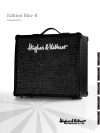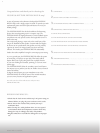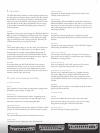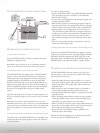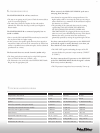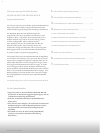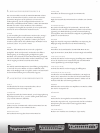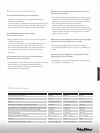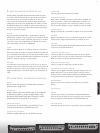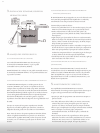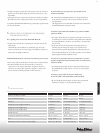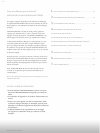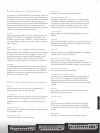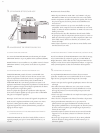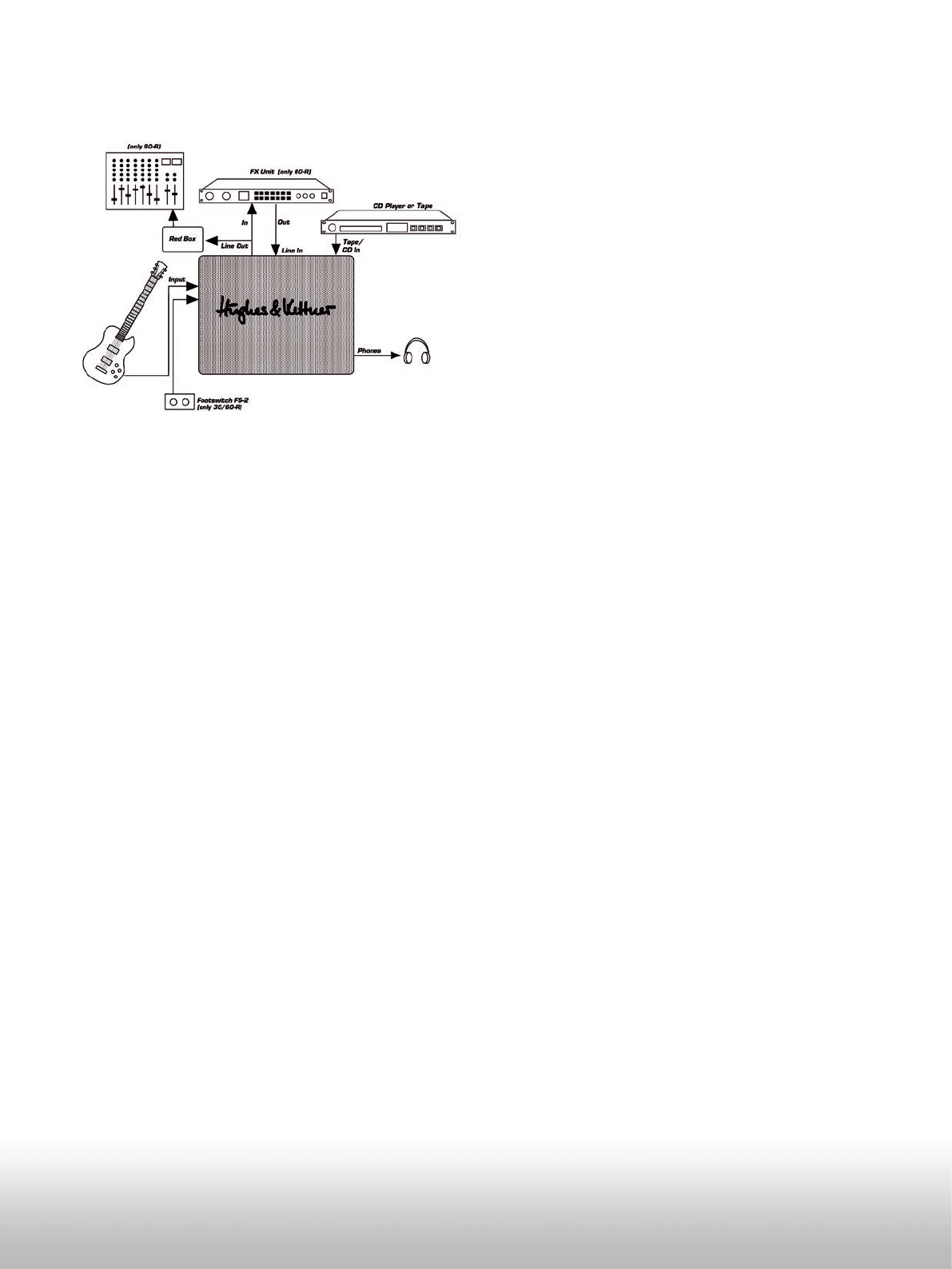
Use the CHANNEL SELECT switch or an external footswitch
(30/60-R) to change channels.
Note: Before using a footswitch, set the CHANNEL SELECT
switch on the front panel of the amp to the CLEAN position.
The EDITION BLUE-R is equipped with a CD/TAPE INPUT
located on the rear panel for the connection of a CD player or
another audio source (tape deck, DAT recorders). The circuit is
controlled directly by the MASTER circuit of the EDITION
BLUE-R, which means that you can use the MASTER knob to
adjust the input signal’s volume. To dial in the desired balance of
levels for the playback and guitar signals, the connected playback
device has to be equipped with some type of variable output
control.
Tip: Most audio playback devices feature a variable headphones out.
Using a corresponding adapter, you can connect it to the CD/TAPE
INPUT.
Note: Before you switch on the audio playback device, turn the
MASTER knob all the way down. Then turn up the MASTER knob
a tad and dial in the desired balance levels. Once you’re satisfied with
these levels, gradually turn up the knob to the the desired overall
level.
The effects loop on the EDITION BLUE-R is a serial effects loop,
meaning that the entire preamp signal is routed to the FX device
and processed there.
To connect a signal processor:
• Connect the processor‘s INPUT to the EDITION BLUE-R LINE
OUT jack and the processor‘s OUTPUT to the EDITION
BLUE-R LINE IN jack.
• To avoid noise, signal degradation, and interrupted signals, only
use high-quality patch cables.
• Make sure the processor is not distorting the signal. Check the
processor's gain LEDs (if it is equipped with this type of display)
and use the input and output controls to dial in a suitable level.
• Distortion devices are not designed for use in an FX loop. As
a rule of thumb, any kind of device that compresses the signal
should be connected first in the signal chain. Depending on the
type of effect you want to achieve, you may want to connect
your compressor directly between the instrument and the amp's
input.
• If you are using several processors or stomp boxes, ensure you
connect them in the proper order.
If you want to feed the EDITION BLUE-R's signal to a mixing
console, we recommend you route it through a Hughes & Kettner
RED BOX. Patch the signal from the LINE OUT jack, as this
signal path's level is not influenced by the MASTER setting. The
RED BOX balances the signal and simulates a speaker cabinet.
The EDITION BLUE-R does not require service of any type.
However, there are a few precautions you should heed to ensure
your amp lasts for many years.
• Ensure all peripheral devices, cords and cables are in a state of
good repair. Defective speaker cables are the most common cause
of power amp failure. Poor-quality cables will cause hum and
undesirable noise.
• Make certain your amp's ventilation ducts are not blocked or
covered. Proper cooling will prolong the life of your amp.
• Avoid mechanical shocks and exposure to extreme heat, dust and
especially moisture.
• When connecting peripheral devices, always pay close attention
to their specifications. Never connect devices with high output
signal levels (e.g. power amps) to your amp's input.
• Ensure you have the correct AC power rating available before you
plug in the amp. If in doubt, ask the venue's sound technician or
the custodian of the building you are rehearsing in.
• Refrain from do-it-yourself repairs! Have a qualified service
technician replace internal fuses.
With the unit off and unplugged, use a soft damp cloth to clean
the exterior surface of the EDITION BLUE-R.



